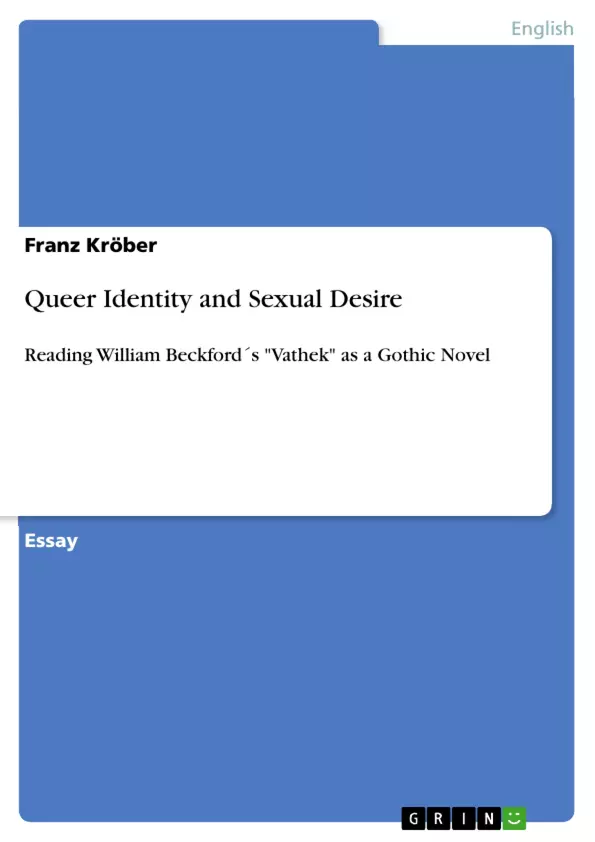To a certain extent, horror and fear in "Vathek" by William Beckford are caused by the anxiety of the unknown. Reading Vathek as a queer Gothic novel helps to uncover both the desire for and the fear and condemnation of a non-heterosexual identity or desire. This essay will give evidence for the thesis that the typical Gothic motifs of queer sexual and gender identity as well as the anxiety and desire aroused by it are mirrored in Beckford´s novel. For this reason, a brief definition of queer Gothic and sexuality in Gothic fiction will precede an analysis of Gulchenrouz and the fifty boys, Vathek, and the Giaour regarding their sexual and gender identity.
Inhaltsverzeichnis (Table of Contents)
- Queer Identity and Sexual Desire: Reading Vathek as a Gothic Novel
- Queer Gothic and Sexuality in Gothic Fiction
- Gulchenrouz and the Fifty Sons
- Vathek and the Giaour
Zielsetzung und Themenschwerpunkte (Objectives and Key Themes)
This essay argues that the novel Vathek by William Beckford can be read as a queer Gothic novel, exploring the themes of non-heterosexual identity and desire. The essay analyzes the ways in which the novel utilizes typical Gothic motifs of queer sexual and gender identity, alongside the anxiety and desire it evokes.
- Queer Gothic and its Representation in Literature
- The Intersection of Gender and Sexuality in Gothic Narratives
- The Exploration of Deviance and the Fear of the Unknown
- The Vilification and Desire for Non-Standard Sexuality in 18th-Century Society
- The Role of the Giaour as a Symbol of Repressed Desire and Fear
Zusammenfassung der Kapitel (Chapter Summaries)
The first section of the essay defines the concept of "queer" in relation to Gothic literature, highlighting the anxieties and desires surrounding gender and sexuality in 18th-century society. It explores how Gothic fiction confronts and challenges the dominant social norms of heterosexuality and masculinity.
The second section examines the characters of Gulchenrouz and the fifty sons, focusing on their effeminate characteristics and their roles as objects of desire. It analyzes how Gulchenrouz's gender-crossing behavior represents a threat to the reproductive order of society.
The third section delves into the character of Vathek and his complex relationship with the Giaour. It explores Vathek's hidden homosexual desires and the way he personifies both the desire for and the fear of queer sexuality. It also examines the Giaour's ambiguous sexuality and his symbolic representation of the fear and desire for non-heterosexuality.
Schlüsselwörter (Keywords)
The essay focuses on the keywords: queer Gothic, non-heterosexual identity, sexual desire, Gothic motifs, gender crossing, effeminacy, homophobia, pederasty, heterosexuality, symbolic representation, deviant sexuality, fear of the unknown, social norms, 18th-century society, and William Beckford's Vathek.
- Quote paper
- Franz Kröber (Author), 2012, Queer Identity and Sexual Desire, Munich, GRIN Verlag, https://www.grin.com/document/191999



